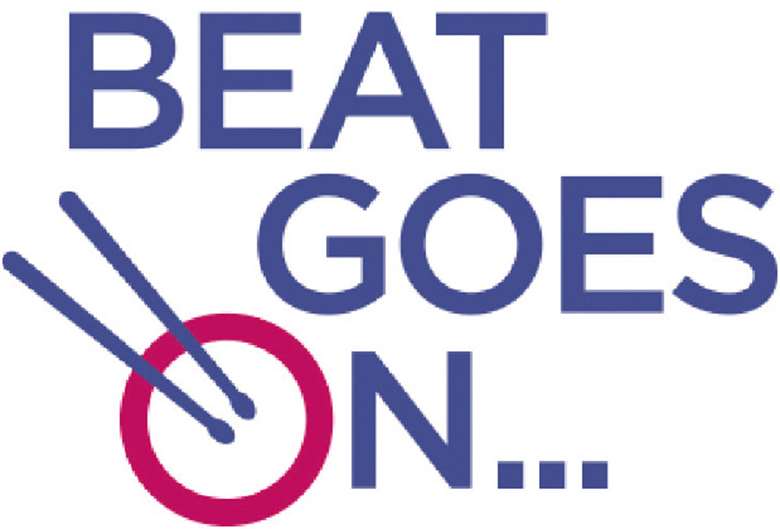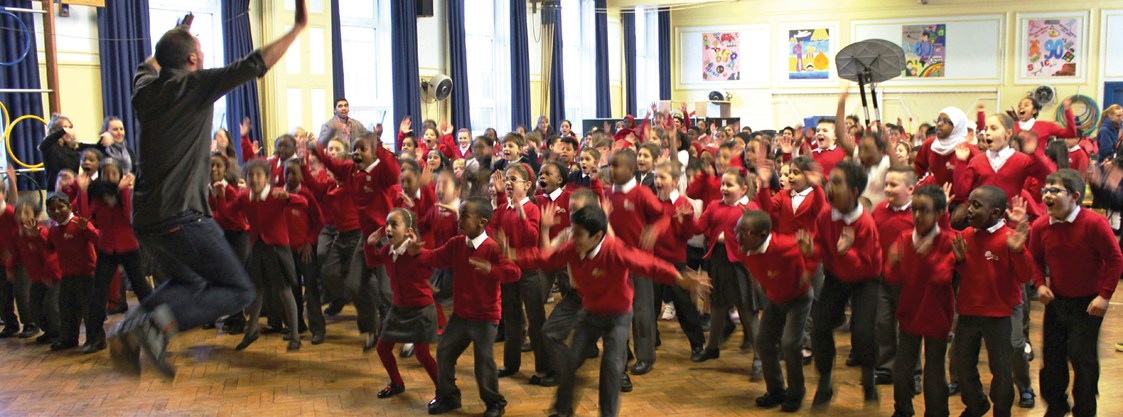The sweet sound of hip music: Body percussion
Rhian Morgan
Sunday, July 1, 2018
While instruments are a great thing to have access to, they can be expensive and aren't always practical. Body percussion is a great way to bring music into the classroom and make it more accessible. Rhian Morgan sees how Beat Goes On gets people moving.

It's not often that a 90-year-old grandmother has much bearing on lesson planning, but Ollie Tunmer has found that body percussion workshops can be equally fun and beneficial to a group of pensioners as to a class of children.
Tunmer, whose Beat Goes On workshops have reached tens of thousands of children as well as the occasional care home, believes that in addition to being great fun, body percussion's accessibility makes the genre popular with both students and teachers.
A former cast member of the show STOMP and a qualified secondary music teacher, he runs CPD and Inset days for Teach First and many music education hubs.
‘Specialist music teachers have long known the value of body percussion,’ he says. ‘It's music you can make anywhere and with anything. This makes it an exciting tool for use by non-musicians in their lessons.
‘Sometimes, lessons need to start with an energiser. Last lesson of a rainy day? Start with an energiser. A sleepy class after a school trip? Start with an energiser. It wakes everyone up and gets the children ready to learn.
‘A good option is to combine body percussion with call-and-response. Try clapping and stomping a rhythm to your class and getting them to copy it back to you. Be fussy about the pupils being accurate with the rhythm and keeping a steady pulse. This will focus their minds on accuracy and wake them up.’
In action
Caitlin Sherring is head of music at Woodcroft Primary School in Edgware, north London. Her school won Best School Music Department at the Music Teacher Awards for Excellence 2015, and she believes the school's use of body percussion through workshops with Beat Goes On benefits many parts of the curriculum.
‘Having Ollie in is amazing because it's so easy to build on what he does. The kids really enjoy what's given to them in such an engaging way and they can link it with obvious areas, such as gymnastics and dance. It also influences how they work in literacy, with work on, say, syllables – and in maths, reinforcing fractions or division work.’
Woodcroft uses body percussion from Reception to Year 6. Sherring puts children in small groups, giving them the independence to work together and the flexibility to create their own pieces.
‘You give them a few basics to support their imagination and they get on with it,’ she says. ‘To them, it feels like play.’
It's also popular with teachers who, she says, are more confident with this than teaching singing: ‘Body percussion often feels more like dance and movement than music and a lot of teachers find that easier to teach.’
As a tool for teaching rhythm, Sherring finds body percussion essential. ‘Notated rhythm can be meaningless symbols for many people,’ she says. ‘When we are looking outside Western music, at African music or a samba, we are dealing with incredibly complex rhythms, extending and challenging our pupils immediately. There are ridiculously complicated time signatures that an A-level student couldn't read, but our young pupils are performing them straight away; they have played them and they have felt them. When they see what it looks like written down, they feel very intelligent!’

Ollie Tunmer in action at Woodcroft Primary School (© CRAIG TALLON)
The literacy expert Pie Corbett believes that body percussion ‘lets the rhythms and meanings of poems and stories fly. Exploring story and poetry through the arts deepens imaginative engagement and makes language memorable.’ The result of such cross-curricular work is, says Tunmer, ‘high-energy, creative fun for all involved and, of course, astounding results.
‘With not enough money for music education, a few factors have cropped up in discussion a lot recently – how to develop meaningful music education Inset in schools and how to make the most of limited resources.
‘Teachers say some CPD is fun but not always transferable to everyday life. Material covered in a one-off Inset session can seem great at the time but, when implemented in the classroom, unexpected challenges arise and the new material goes by the wayside.
‘But we are aware of the diversity of teaching environments and always aim to provide practical, accessible and adaptable resources. Much of our CPD is delivered before, during and after class time. This allows for reflection and feedback of the material in action.’
For Woodcroft's head, Craig Tallon, the percussion workshops have been an eye-opener. ‘The fun and energetic atmosphere visibly brought these young people out of their shells and I witnessed them truly throwing themselves into the session,’ he says. ‘It was inclusive yet challenging. Each new rhythm we learned initially seemed impossible, but with patient and motivational teaching, the entire group mastered it every time and nobody was left behind.’
And as for Tunmer's 90-year-old grandmother? ‘She never really understood what I did when I talked about body percussion, but when she and her friends got going in the workshop, it was just great!’
Ollie Tunmer's advice for creating a culture of performance in your school
- Music education is divided into three disciplines: performing, composing and listening. Of these, performing is the most visible and audible in a school environment. One of the best ways to ensure that music has a high profile in your school is to develop a culture of performance.
- You can achieve this by arranging for pupils to perform in each assembly – perhaps as the other pupils arrive, arranging informal lunchtime concerts and organising the occasional flash mob.
- Body percussion lends itself particularly well to flash mobs, since the performers are the instruments.
- The increased visibility of music serves as advertising for your department and brings pupils to your extra-curricular offering.
- There might be scope to work with foreign language teachers to arrange a Eurovision competition where pupils perform and compose songs in the target language.
- Instead of a music teacher just providing the sports day PA system, students could compose music to be performed as the awards are given out. Similarly, an ensemble could provide live entrance music for the next drama production.

